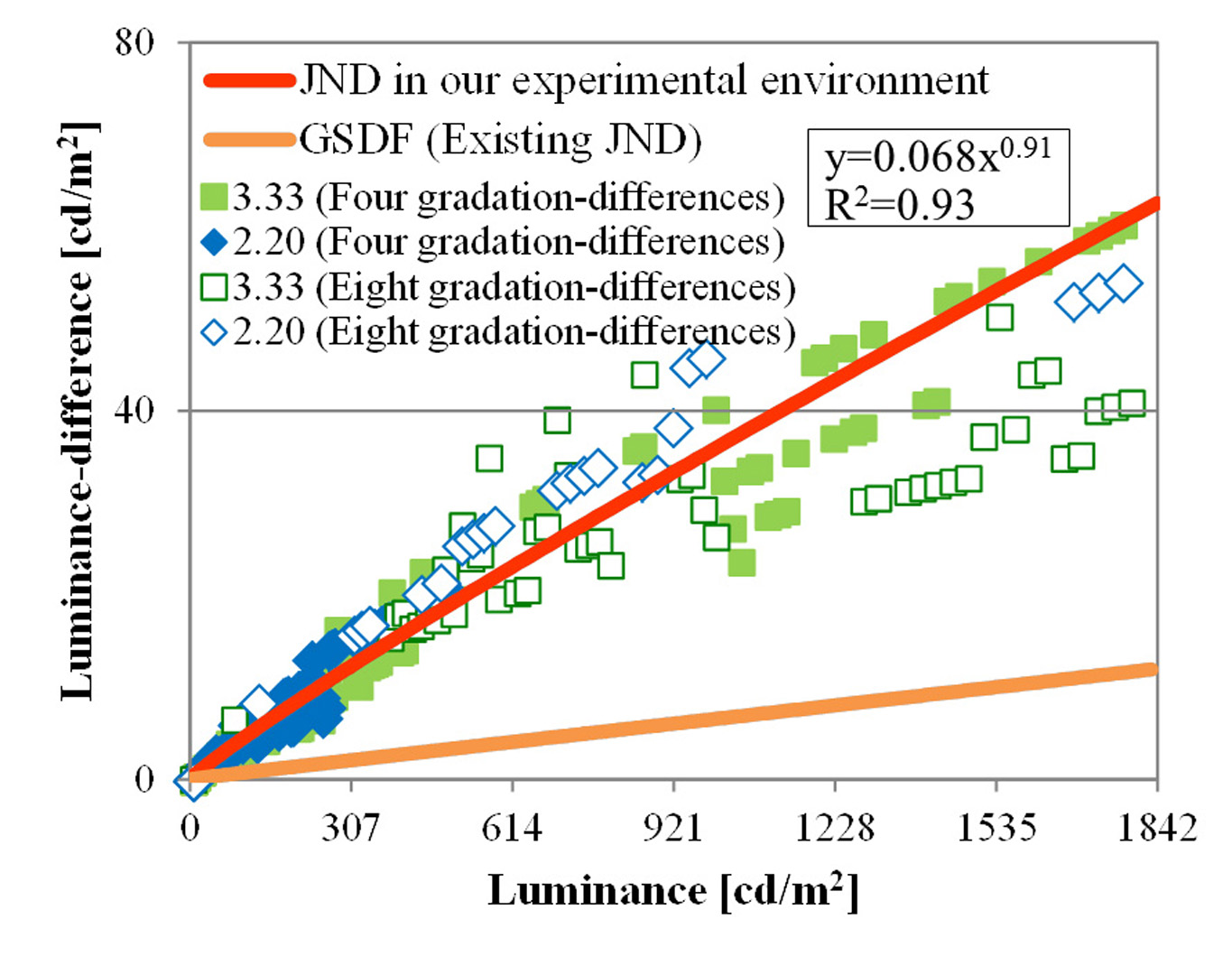“An Examination of a Gradation Number for High-Gradation Displays Based on Luminance-Differences” by Inoue, Sato, Ayama and Hashimoto
Conference:
Type(s):
Title:
- An Examination of a Gradation Number for High-Gradation Displays Based on Luminance-Differences
Presenter(s)/Author(s):
Entry Number: 18
Abstract:
With recent advances in high dynamic range displays, high-gradation displays have been actively studied. High-gradation displays have more than 256 gradations. When a luminance range of a display is very wide, a luminance-difference between each pixel value becomes small by increasing a gradation number. If this luminance-difference is larger than just noticeable difference (JND), the viewer may see contours on changes in gradation. Therefore, the number of gradations must be set up so that the luminance-difference between each pixel value is smaller than JND [Toshiyuki et al. 2008]. On the other hand, in usual high-gradation studies [Seetzen et al. 2004], the number of recognizable gradations is treated as one of the performance metrics because medical use high-gradation displays are based on DICOM GSDF and have recognizable gradations. Therefore, we must examine what kind of luminance-difference is appropriate for the outside of the medical field because high-gradation displays will be used there as well.
References:
1. Fujine, T., Kanda, T., Sugino, M., Yamamoto, Y., and Ohta, N. 2008. Evaluation for display color reproduction ability using number of distinguishable colors. The Imaging Society of Japan 47, 6, 508–519.
2. Inoue, M., Tanaka, T., Sato, M., Kasuga, M., and Hashimoto, N. 2012. An analysis of response characteristics for high dynamic range display. The 2012 International Workshop on Advanced Image Technology, 512–516.
3. Seetzen, H., Heidrich, W., Stuerzlinger, W., Ward, G., Whitehead, L., Trentacoste, M., Ghosh, A., and Vorozcovs, A. 2004. High dynamic range display systems. Proc. of SIGGRAPH ’04 (Special issue of ACM Transactions on Graphics) 23, 760–768.
Acknowledgements:
This work was supported by JSPS KAKENHI Grant Number 24500251.





